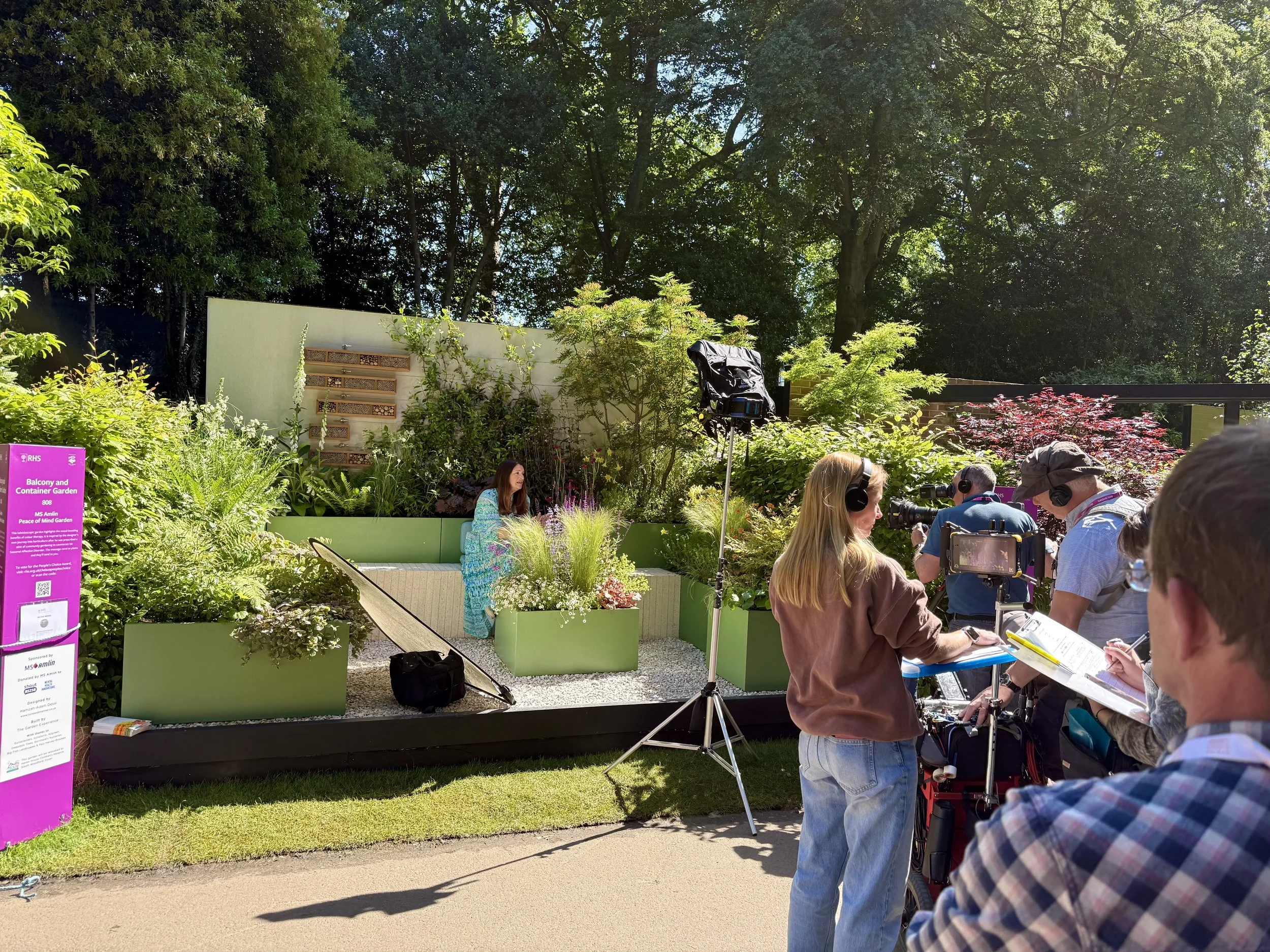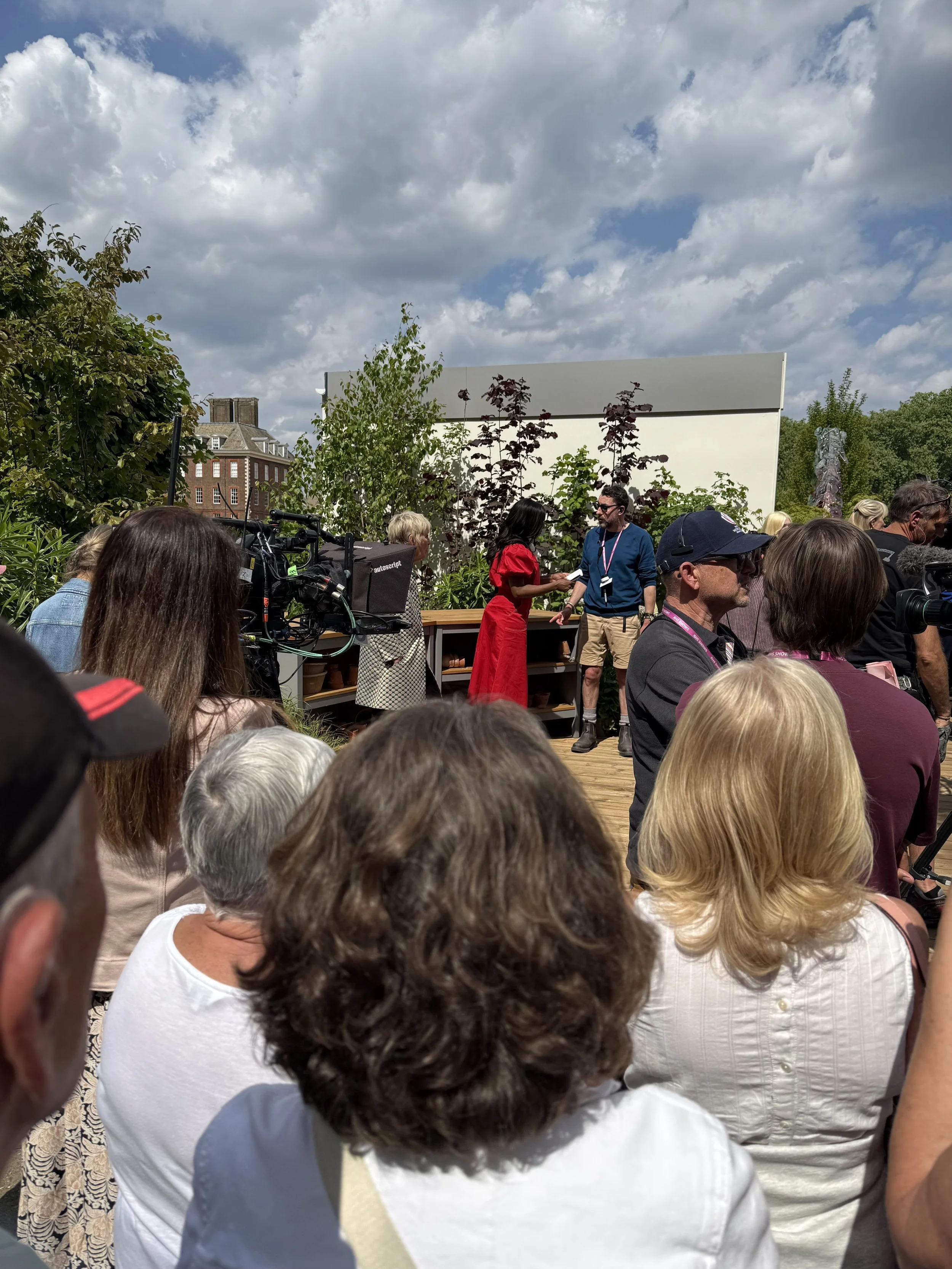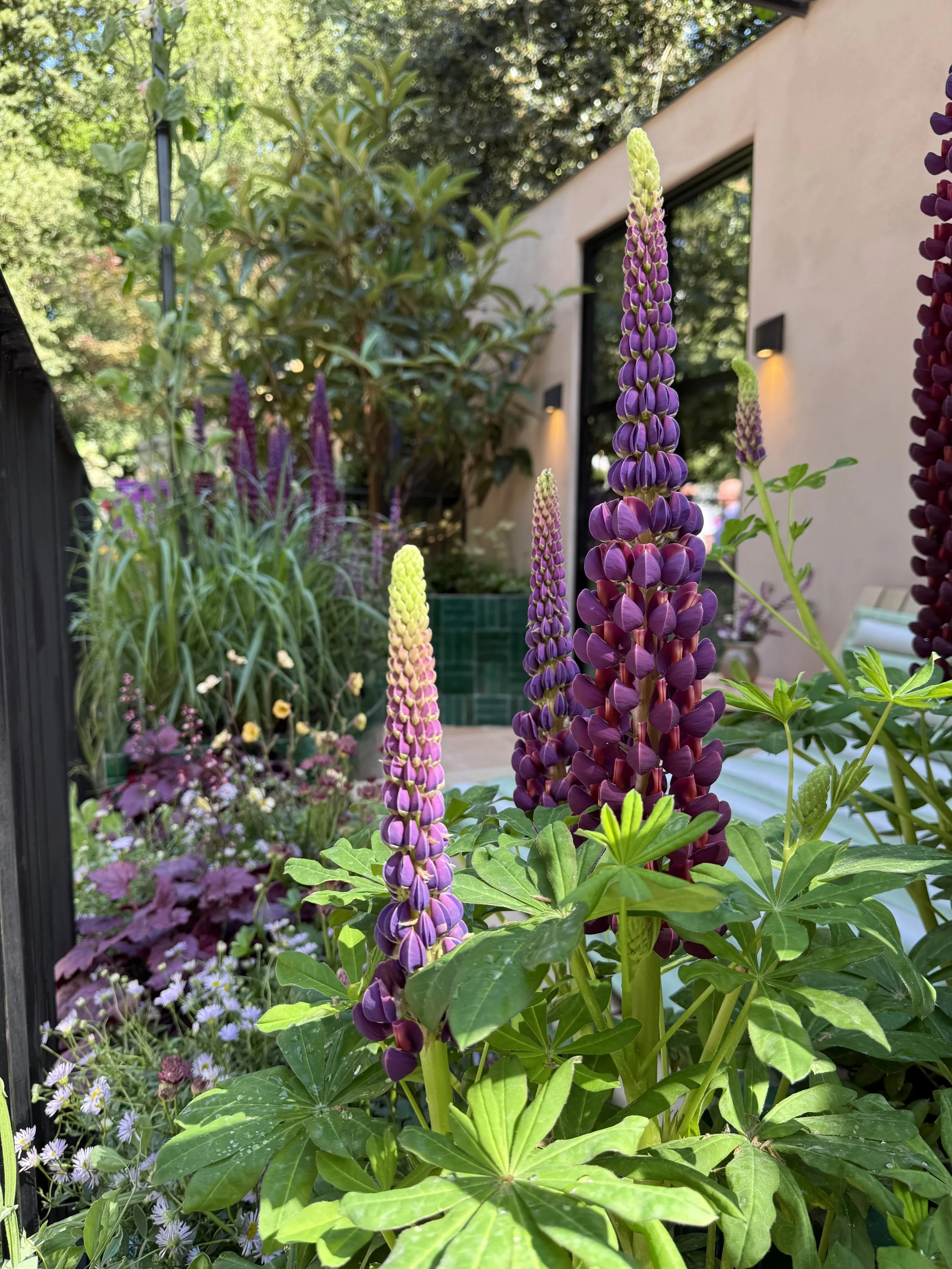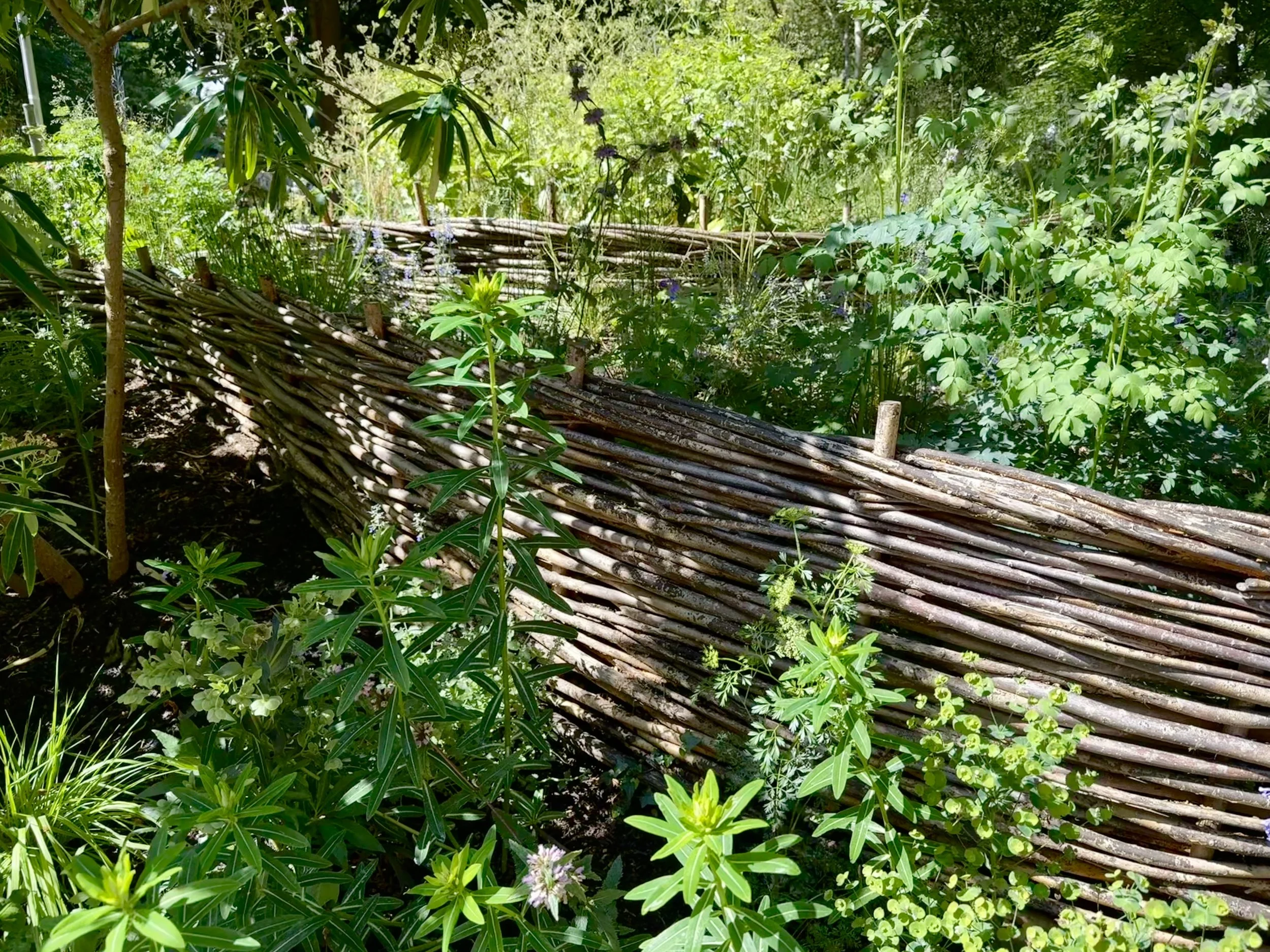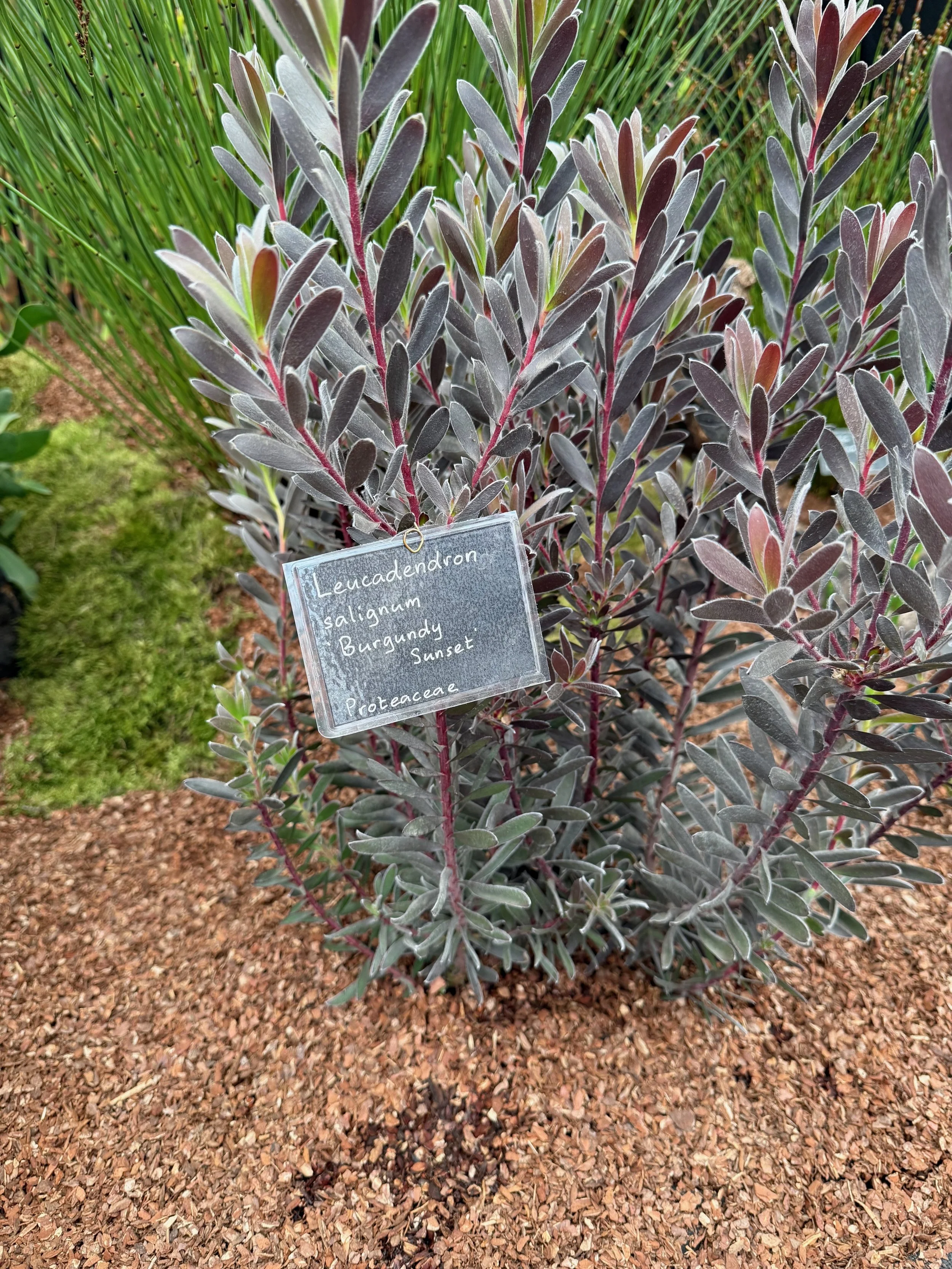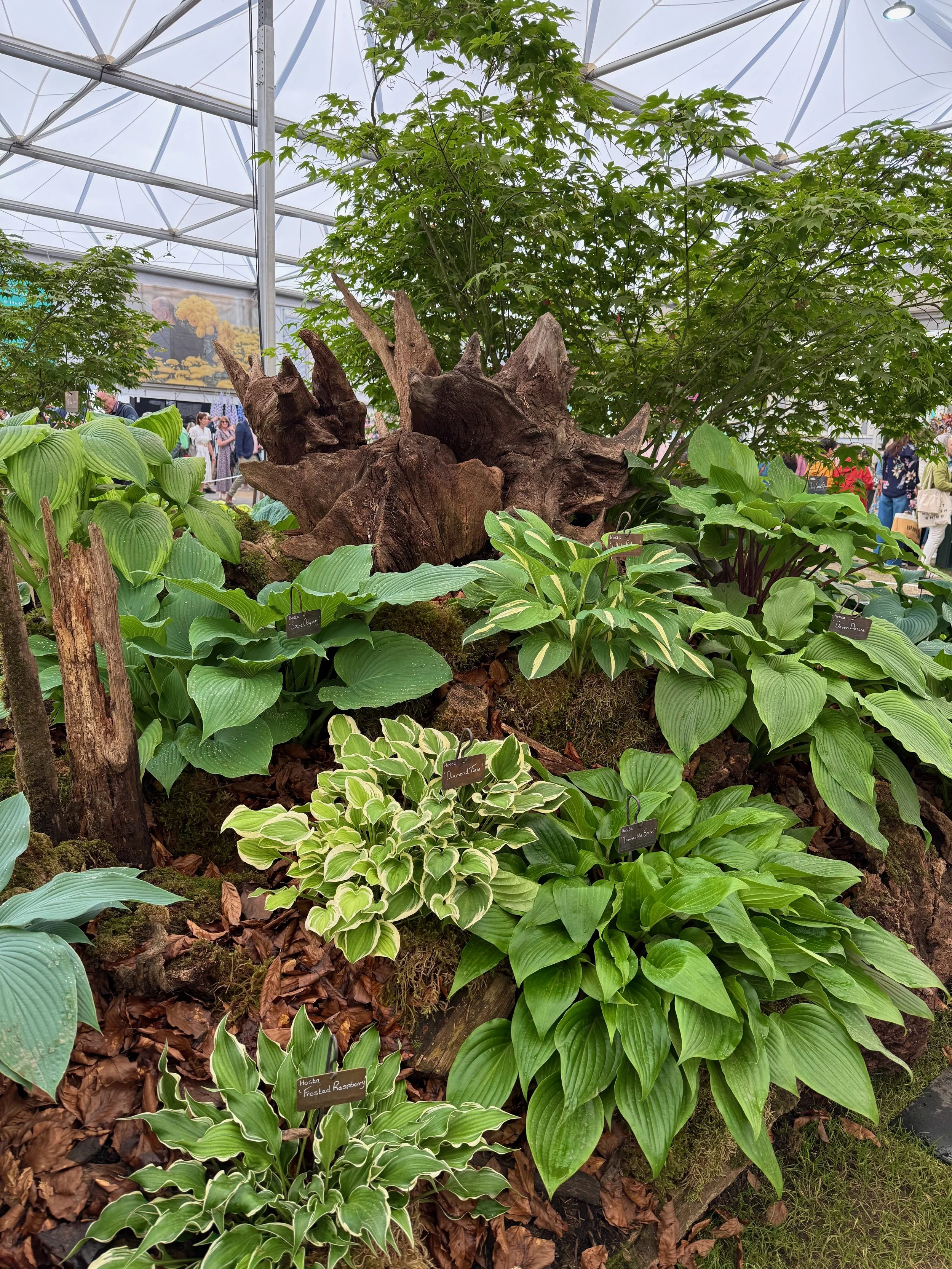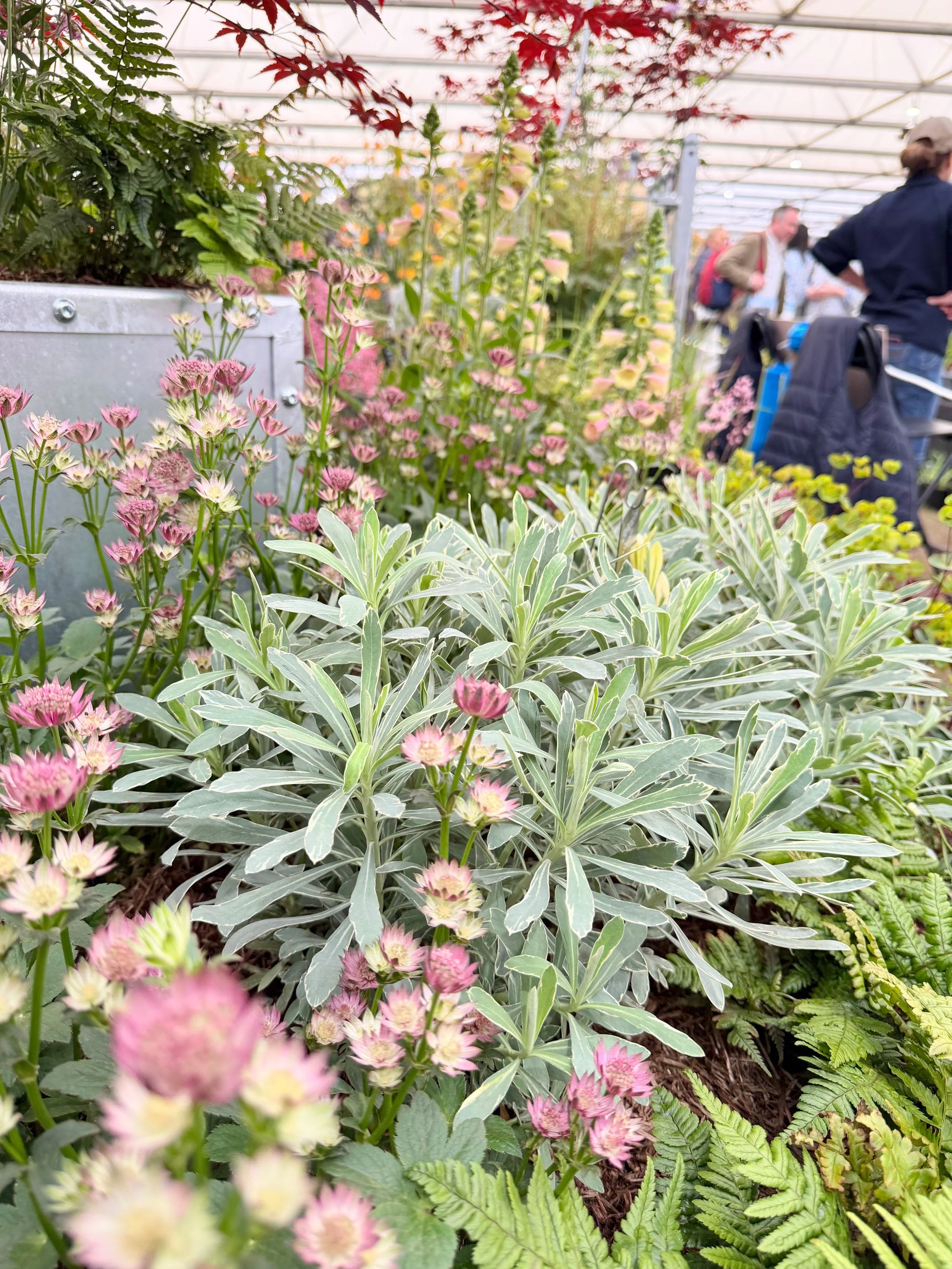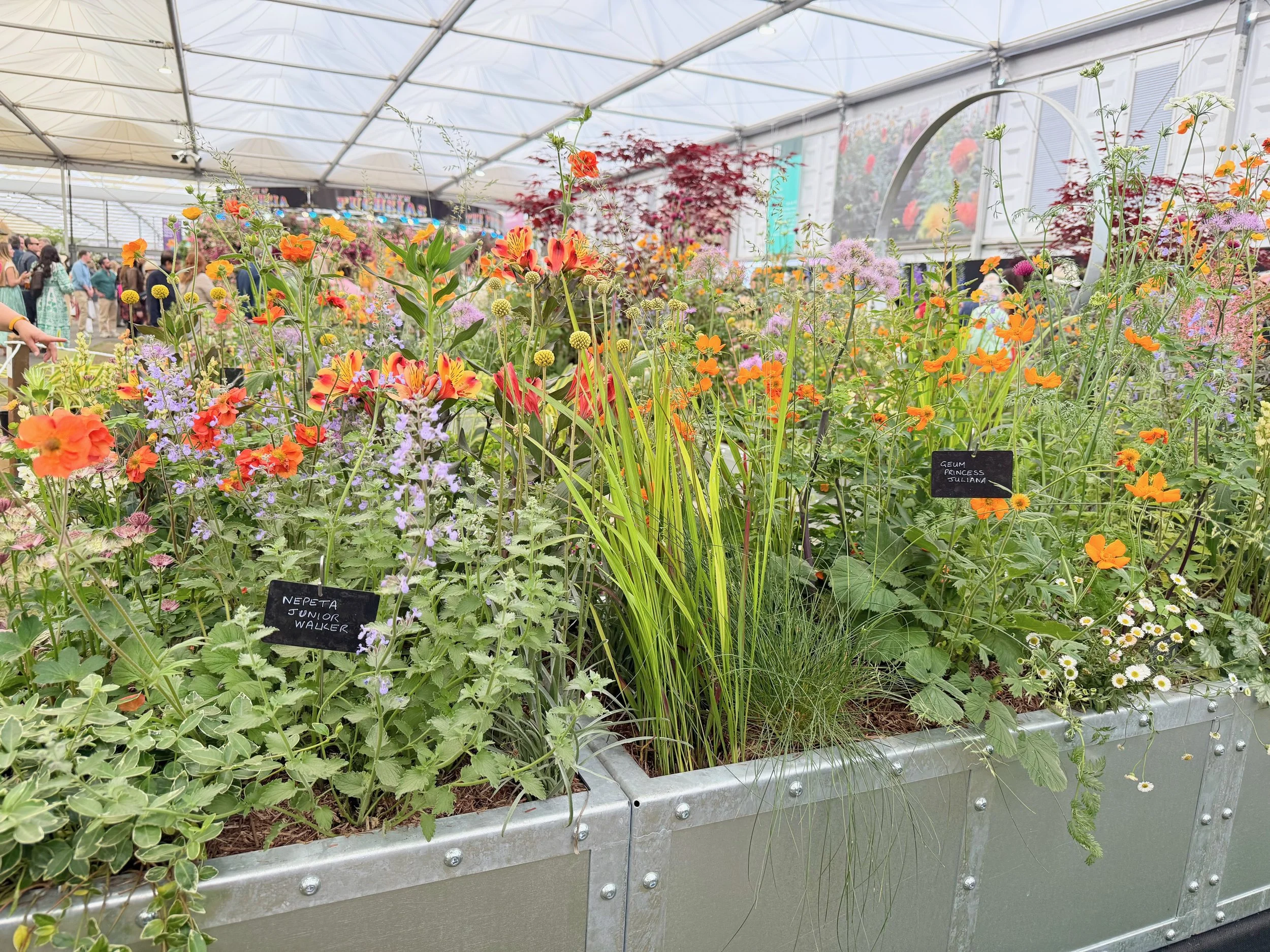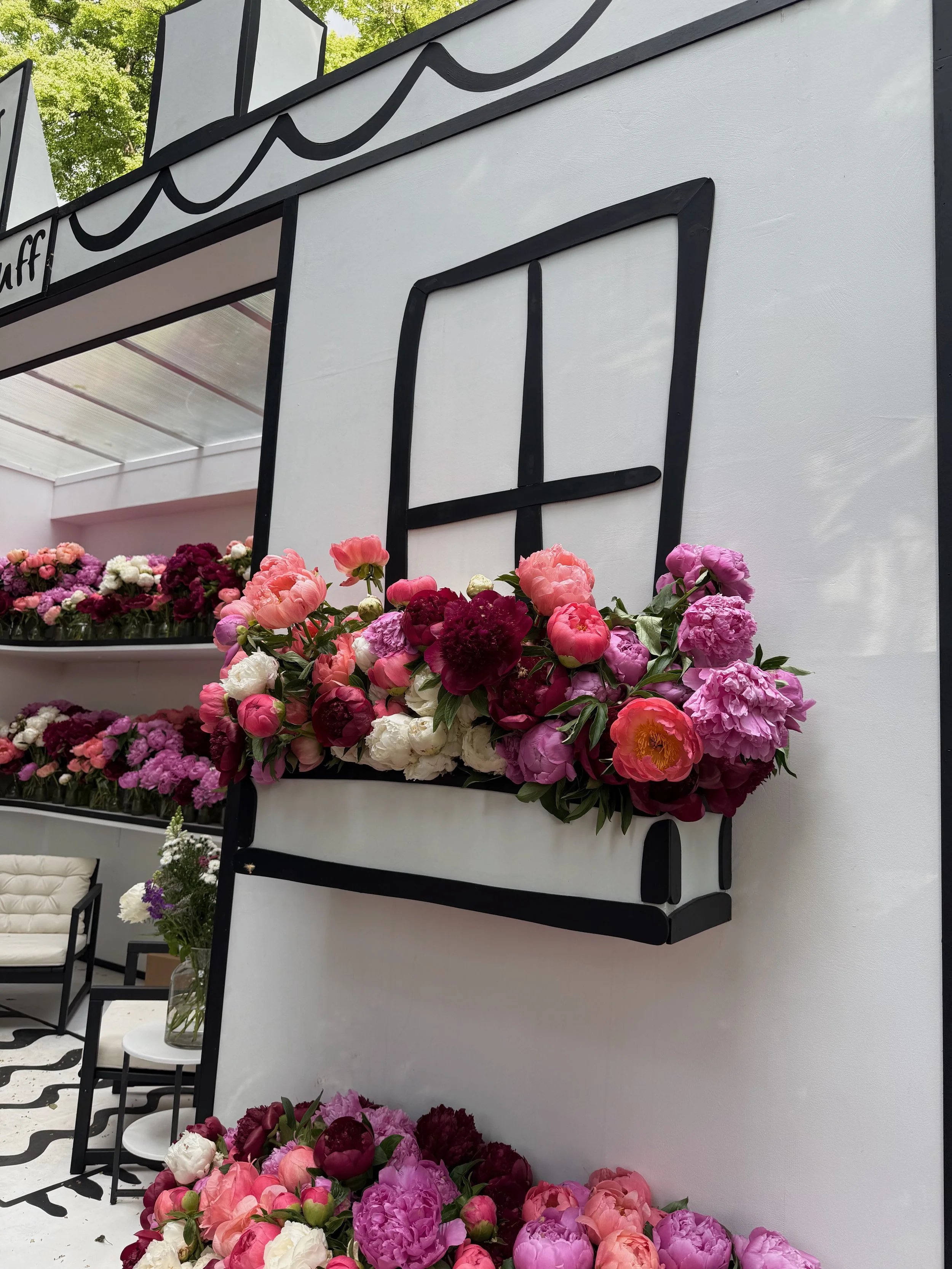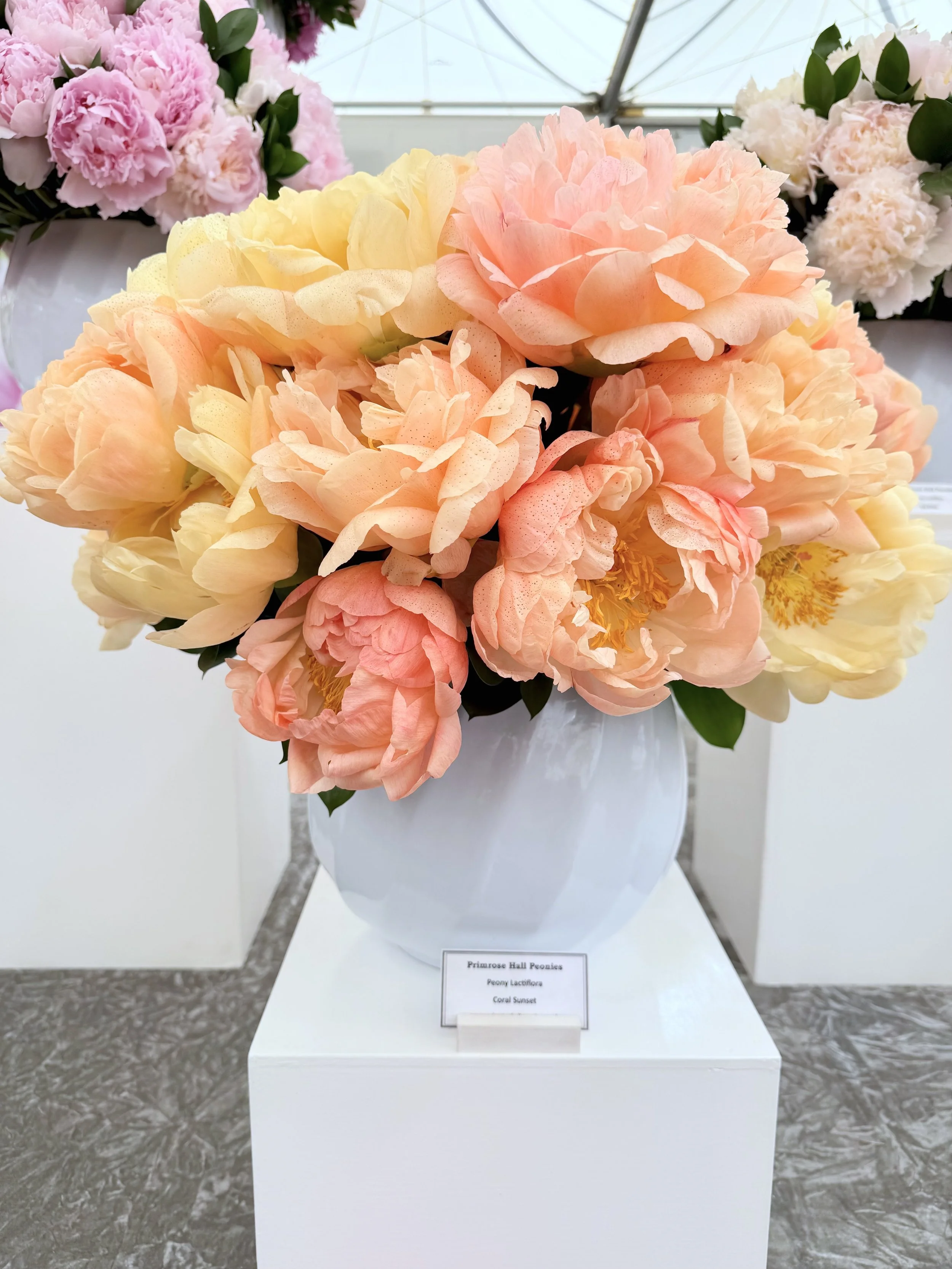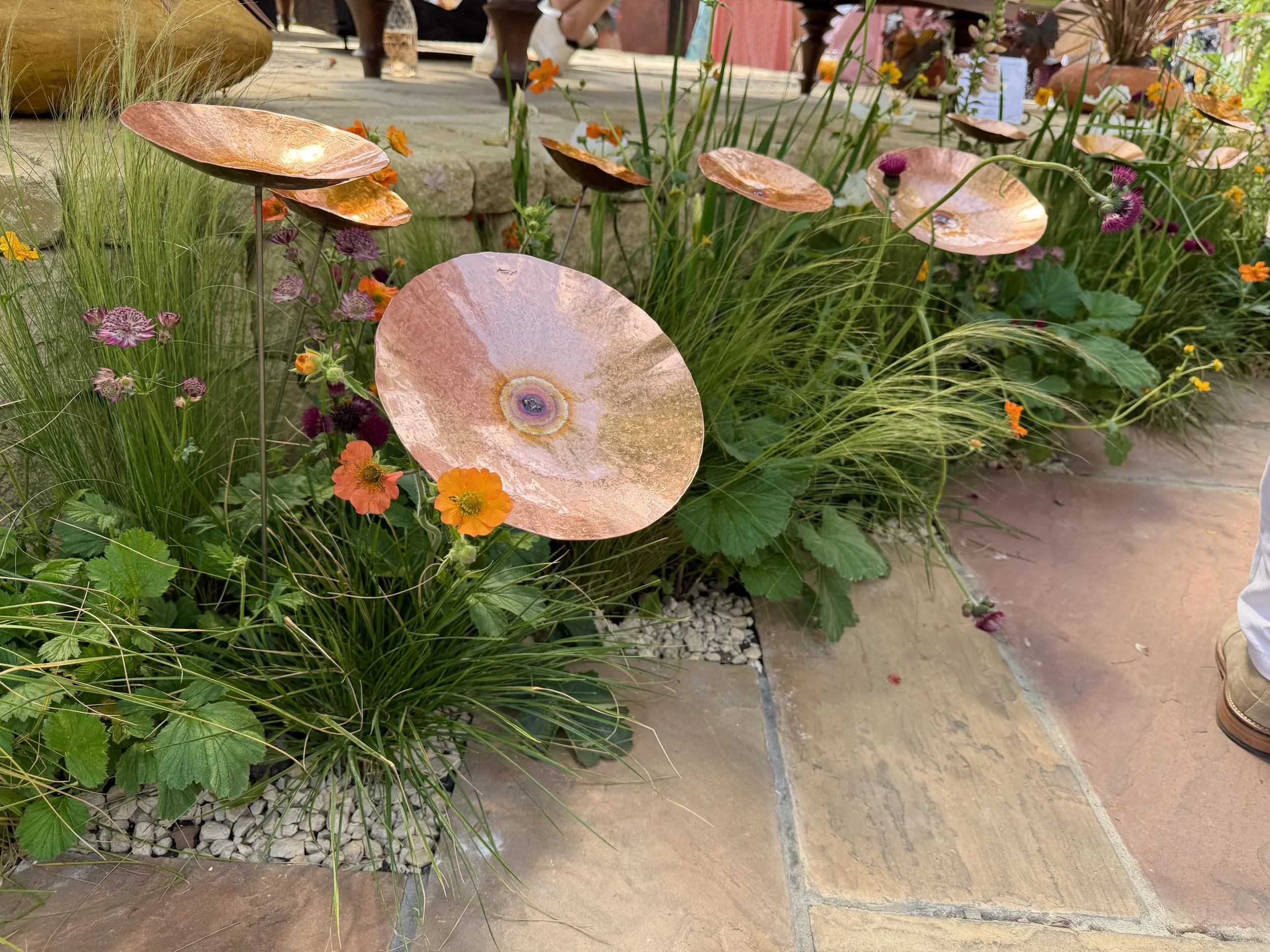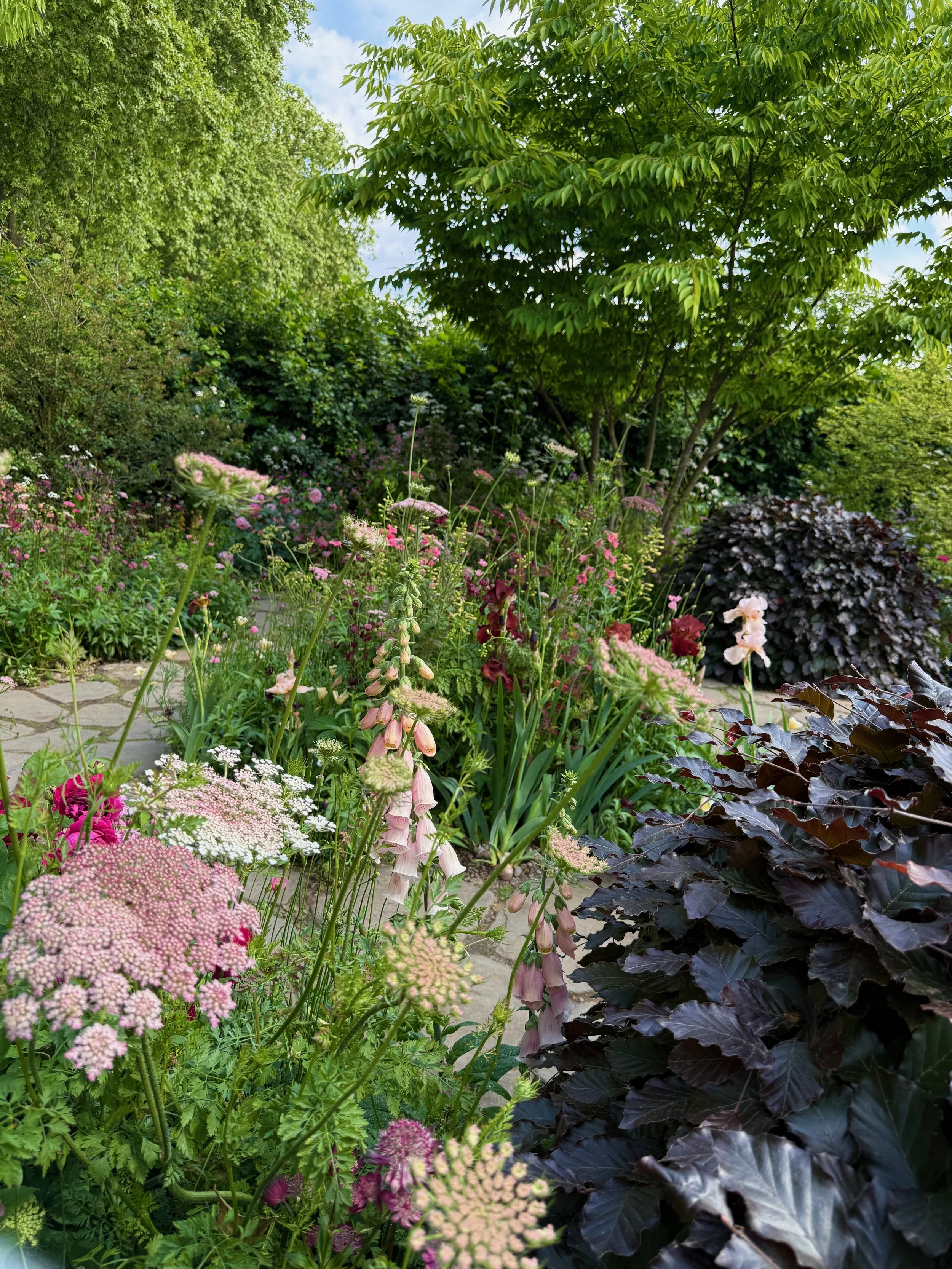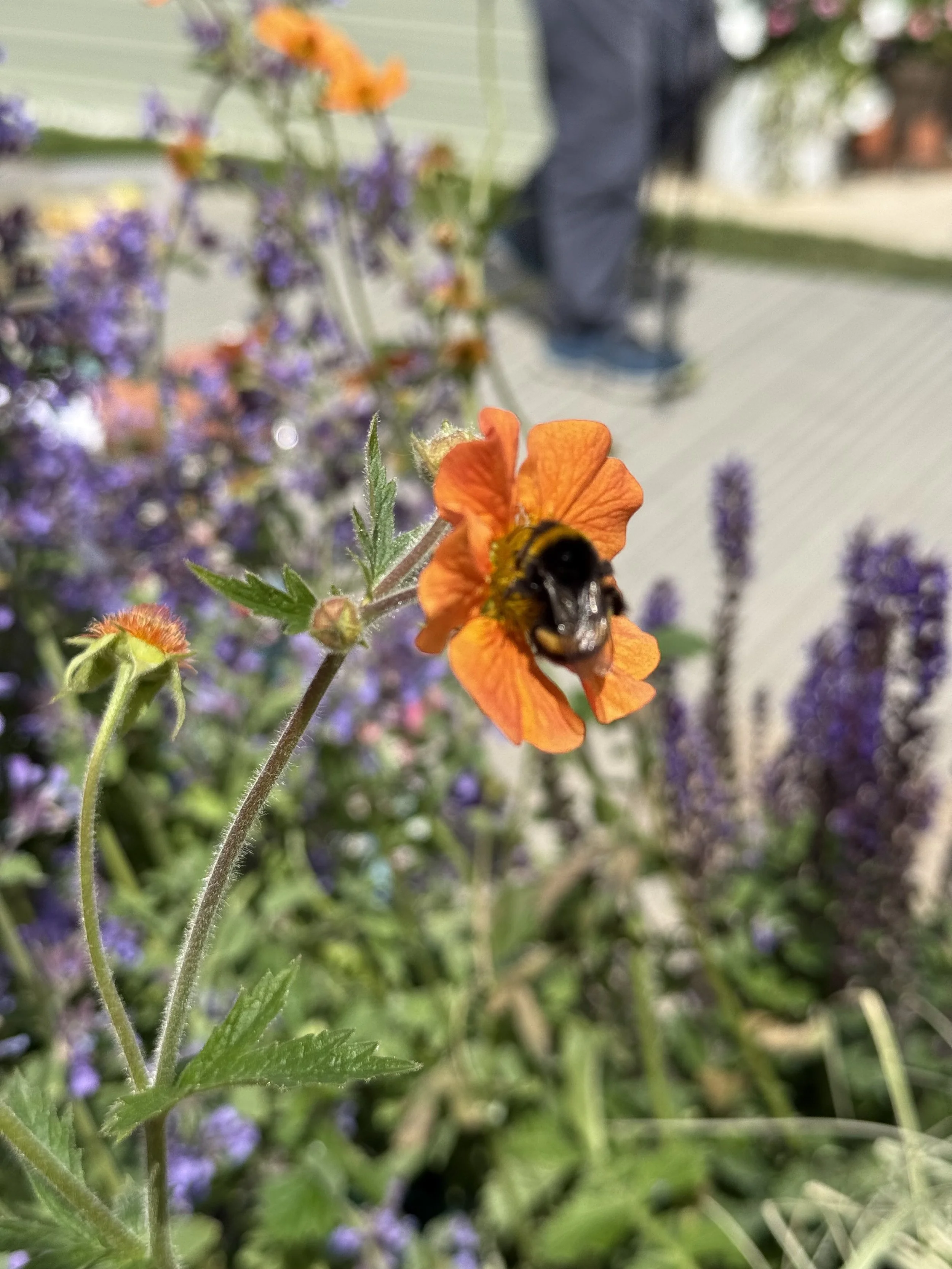Garden Design Inspiration
Design Inspiration & Reflections
from the 2025 Chelsea Flower Show
This is part of a series about design ideas from the 2025 Chelsea Flower Show.
You’ll find all of my posts here.
What is the Chelsea Flower Show?
Last Christmas, my husband and son surprised me with an adventure. “On May 21, right after school, we will head to the airport,” they said, “and board a plane for London, and then the next day we will go to the Chelsea Flower Show!” When your spouse travels a lot, the only perk in it all is hotel points and air miles which sometimes allow our family to do marvelous things — and this was one of them!
I have wanted to attend the Chelsea Flower Show for years. It’s the biggest flower show in the world, according to the Royal Horticultural Society, and it is covered extensively by the BBC and international press as a place for innovation in garden design as well as the discovery of new plant cultivars and ideas in gardening. But the target market here is truly the draw for me: home gardeners. Unlike home and garden shows here in the US, it's heavy on garden and is truly a celebration of garden design and plants galore. And Chelsea celebrates garden design with depth and style.
The UK has a culture of home gardening that reaches back centuries. Gardening is not just about growing vegetables — as the word “gardening” tends to be applied here in the US. Gardening means growing flowers, vegetables, and anything else. In the UK people have “gardens” not yards — and that difference is quite distinct. It's a distinction I've adopted and which has changed my gardening practice, too. Over the course of a week, 145,000 people visited the Chelsea Flower Show this year. And of course, some of those were gardening professionals, but most were home gardeners like me who love plants, flowers, vegetables and trees, and who sought inspiration, novelty, and new ideas.
And they certainly found them!
Watching the BBC Crews at Work at Chelsea
I will confess, I was a little overwhelmed by what I saw this year! By the end of a very full day with the crowds and the scents and the visual stimulation — I was on full overload. But it was a delighted, happy overload to be sure.
I have watched the coverage of the Chelsea Flower Show on BritBox for years — and online before that. So I had ideas about what to expect, but of course the in-person experience is quite different. However, the BBC and Gardeners' World crews are hard at work right in the middle of the show, and it was such fun to see them in action.
I was struck, too, by how respectful and quiet the show attendees were as they gathered to watch Monty Don, Rachel De Thame, Adam Frost, and Carol Klein doing their work within the show grounds. Clearly, the reverence I feel for these gardeners who also double as presenters is a common feeling amongst people here. The presenters were hard at work and rarely even acknowledged the crowds around them, but the gardeners didn’t seem to mind in the least — happy to share their rarified air for a brief bit.
Ideas for Small Garden Spaces and Balcony Gardens
Our first encounter with a Gardeners' World personality was seeing Rachel De Thame at work in the midst of one of the Balcony and Container Gardens — a beautiful section of the Chelsea show tucked along a forested path on the Royal Hospital Chelsea grounds. The Balcony and Container Gardens are just as they sound — showcases for big ideas in small spaces. And they had some wonderful ideas! Some of the balconies were so full of plants, you would struggle to find a place to sit and enjoy it all, but glorious excess is the point here. And, honestly, if I just had a balcony or a patio, mine would probably be more garden and less sitting as well.
My favorite of the Balcony and Container Gardens was called “A Space to Read” and was designed by Freddie Strickland & Ben Gifford. I mean: books and plants — they were truly speaking my language! This garden looked both livable and achievable with a collection of pots and containers filled with plants with long lifespans like Cornus kousa, Bergenia ciliata ‘Large Leaf’, and Lathyrus latifolius ‘White Pearl’. It was sophisticated and yet relaxed with realistic furniture for sitting and reading. And the plantings provided privacy and perhaps some shade, too. But the design is completely achievable – because here’s the thing: if you are gardening on a balcony, you likely have an elevator or stairs to navigate and no garage for storage. So perennials and long-lived annuals make more sense than short-lived ephemerals which require a lot more maintenance. And if your garden is about a place to read: you need to have time to read there!
I loved the trees in large containers — this was a theme I saw over and over again at the show. And it has me thinking about how to deploy that kind of idea at home, too. It’s trickier in a harsh climate like Colorado, but for those in more temperate parts of North America, it’s not a new idea, but something perhaps we should consider more often.
“A Space to Read” designed by Freddie Strickland & Ben Gifford — my favorite of the Balcony Gardens!
Gold Medal winner and judged Best Balcony Garden: Blue Mind Garden by Ashleigh Aylett
Another idea that I saw repeatedly, including in the container gardens, was wattle fencing. Wattle — a weaving technique created using young hazel or other flexible trees and shrubs — is quintessentially English country garden. It’s rare in North America, and generally what we see is faux wattle made from plastic. But there is no substitute for the real thing.
Wattle is woven from the harvested young growth of trees when they are coppiced. Coppicing is one of my favorite techniques for keeping trees and shrubs small, supple, and less water-hungry. So maybe planting a border of multi-stemmed trees expressly for the purpose of learning to make wattle walls and containers is in my future! I love the look, the fact that it is all natural, and the idea of it all being reused over time.
Lupines in another balcony garden. Gorgeous!
Wattle: a little Beatrix Potter, a little Jane Austen, and a lot to love!
Shopping at Chelsea: the Great Pavillion is GRAND
Now, in addition to IDEAS, there is a LOT of shopping to be done at Chelsea. And if I could bring home plants and seeds — well, that would have been VERY dangerous. But since we can’t do that, I did a lot of shopping with my eyes and recording plant species for research at home.
Most of the plant and seed sellers are located inside the Great Pavillion — a HUGE tent filled with hundreds of stands, large and small. Walking in I was overwhelmed by a wall of fragrance — and pollen. Everything possible in bloom — all at the same time. Growers displayed their plants with both creativity and joy, and they were happy to answer questions. It is simply a gathering of plant-lovers who want to nerd-out about plants — and that is true about the whole of the Chelsea crowd.
I was particularly stunned by the David Austin Roses display — arches of roses surrounded by roses in a ring of rose-extravagance. I don’t think I have ever seen so many rose plants in one place — all in perfect bloom.
The same was true of a display by Rouaelyn Fuchsias — a glorious merry-go-round of hanging basket madness.
But seeing people like She Grows Veg in person and their beautiful display of vegetable-growing as art was such a delight, too. I have followed them for years on Instagram, and their display was like Instagram brought to life.
And some of the growers had me questioning my own plants. I have grown Coral Sunset peonies for several years, but they have always been pink — nothing like THIS! WOW! But that may be the fact that I grow at altitude which can change the color of blooms.
I also saw Claverton Cloches for the first time in person — they are amazing! We don’t have a culture of using cloches in US gardening. Not in the same way that the English do, and that’s to our detriment. Cloches can be incredibly helpful when growing in a place with cold nights and warmer days. You can grow overwinter in some places. And you certainly can get an early start to spring, too. Not to mention a cloche can protect tender plants in cold weather. But there’s a big difference between a flimsy, plastic cloche and Claverton Cloches which are made of iron and glass. They won’t blow away and are made to last generations — as their Victorian predecessors have. I have serious cloche-envy after seeing them in person!
Another product I loved were these little copper bee baths from Kubucu. They are called Copper Poppies and will sway and glisten in your garden, but they will also collect rain water for bees and birds to take a sip from. I love them! They are amazing little pieces of art for a garden.
The Show Gardens at Chelsea
But the biggest draw at Chelsea is the Show Gardens — gardens created from scratch for each show by celebrated garden designers from the UK and beyond. On the BBC coverage, these show gardens get lots of air time, and in some ways the experience on TV is more intimate, because visitors are kept on the perimeters to look into the gardens — but not be IN the gardens. I was a little surprised at how small the show gardens are. They look bigger on TV — doesn’t everything? But the ideas and designs are in no way diminished just because I thought the gardens were bigger!
I had two favorite gardens: The Glasshouse designed by Jo Thompson and Monty Don’s Dog Garden.
The Glasshouse Garden by Jo Thompson
The Glasshouse Garden is a celebration of purples and greens — my two favorite colors. And the dense plantings and gorgeous flower choices kept me coming back to see it in different lights. It’s a beautiful and somewhat achievable composition, too. Honestly, you could take the plant list and recreate this garden in most climates (with some substitutions), and have an amazing border for much of the summer.
The plants included three spectacular roses: Rosa ‘Tuscany Superb’, Rosa ‘Nuits de Young’, and Rosa ‘Emma Bridgewater' — together those colors were absolutely spectacular. And the borders were packed with Astrantia ‘Burgundy Manor’.
Astrantia was one of the plants that was EVERYWHERE at the show this year with so many varieties. It’s gorgeous in all of its forms! It was particularly effective in The Glasshouse Garden amongst the ferns and other greenery. For a full plant list, click here.
The Dog Garden by Monty Don
Monty Don, the celebrated and beloved host of the BBC’s Gardeners' World, is not a garden designer by profession, but he certainly is one at heart. He has a beautiful garden, Longmeadow, which is the heart of the show, and he has another personal garden as well. But for this year’s Chelsea Flower Show, he created his first show garden, and it was a triumph. It was like a tiny peek into Longmeadow in person. Densely planted with more than 4,000 favorite flowers and designed with Ned, his venerable golden retriever, at heart, the garden featured tennis balls in the gutters and upcycled materials in the hardscape. And the plants themselves were packed in and all in bloom — another garden heavy in purples and plums with pops of orange for contrast.
It was hard to get to the front of the garden to truly view it — the adoring crowds were thick, particularly the first time I saw it when Monty himself happened to be in the garden filming. But the effect, even from afar, was stunning. Frankly, I expected nothing less.
The plant choices are familiar to anyone who watches Gardeners' World with any regularity. They are largely species (if not varieties) from Monty’s own garden including Hardy Geraniums, Salvia ‘Amistad’, Camassia leichtlinii, Nepeta ‘Walkers Low’, Cornus alba ‘Sibirica’, and Geum ‘Mai Tai’, and so many hostas! And this was intentional. He chose trees that are all native to the UK, and the plants are all varieties common in the garden centers of the UK — and many in the US, too.
But because of the crowds, it was very hard to get a sense for the garden as a whole. This wasn’t true for the other show gardens, but every time I walked past Monty’s garden, a wall of fans blocked the view. So when I got home, I watched some of the Gardeners' World coverage for a better look.
I can’t quite believe I got to have this extraordinary experience, frankly, and I feel so very lucky. I am filled with ideas that I can’t wait to implement here in my garden, too! More plants. More flowers. And more densely planted spaces. That’s the goal.
And I have much more to say, too. Watch this space! I have several more pieces coming with takeaways for home gardeners and ideas specifically for those of us in North America, too.
Happy Gardening!
Angela




